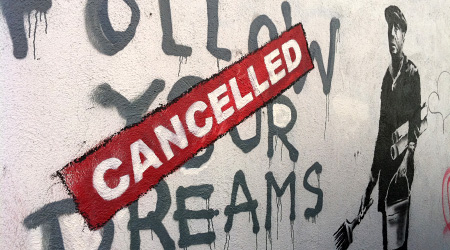The Difference Between Lapsed And Cancelled Auto Insurance?

Auto insurance coverage, much like homeowners insurance and health insurance, is a contract between the customer and insurance provider to offer financial protection should something unforeseen happen. There are a few different circumstances, initiated either by the customer or auto insurer, which will result in either lapsed or canceled auto insurance. Knowing what they are and the difference between the two may help you avoid additional problems or penalties in the future.
Lapsed Coverage
Lapsed auto insurance only occurs when the policyholder fails to make continued premium payments to maintain existing coverage. Whether auto insurance premiums are paid monthly or semiannually, notification is received informing a consumer that payment is necessary to maintain continued coverage. If payment is not received by the due date, there is normally a grace period of approximately 2 weeks before the auto insurance policy is terminated. Unless other auto insurance arrangements have been made, this will result in a lapse in coverage.
Cancelled Policy
Cancelled auto insurance is a voluntary action by the insurance company or policyholder to terminate an existing policy prior to the expected expiration date. Of course, consumers can cancel any insurance policy at any time if they so choose. Such is the case thanks to competition and a free market economy. Auto insurance companies however also have a few different situations in which they may cancel existing coverage. Providing false information when applying for auto insurance or failure to include relevant changes such as having a teenage driver could result in cancellation. Failure to adhere to the terms of the auto insurance policy may also result in a breach of contract and cancellation.
A Key Difference
The primary difference between a lapsed or cancelled auto insurance policy is that lapsed insurance will usually result in a gap in coverage. Either due to financial or time mismanagement, consumers sometimes wait too long to make their next auto insurance premium payment. Then they get in a fender bender and find out their policy has lapsed. Cancellation is normally more proactive and multiple forms of communication including e-mails and telephone calls result in all parties being clearly informed. Cancellation normally occurs when a consumer is looking for better auto insurance rates and calls their current insurer to cancel their existing policy. This results in a prorated amount being credited to the consumer who then starts a new policy with a different provider.
Possible Penalties
There may be penalties involved when reinstating lapsed auto insurance. Many auto insurance providers require a vehicle to maintain continued coverage and impose higher premium rates on vehicles which are not currently covered. Many states also have an auto insurance requirement to register a car and to drive legally. Failure to do so may result in a suspended license and multiple citations. Given the personal and financial implications of driving a vehicle that is not insured, it is important to always maintain continued coverage. The penalties significantly outweigh the costs associated with premium payments. If you're finding it difficult to make your auto insurance payments, look for other ways to reduce your rates before experiencing a lapse in coverage or canceling your policy outright.







